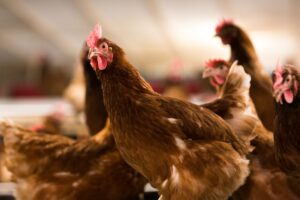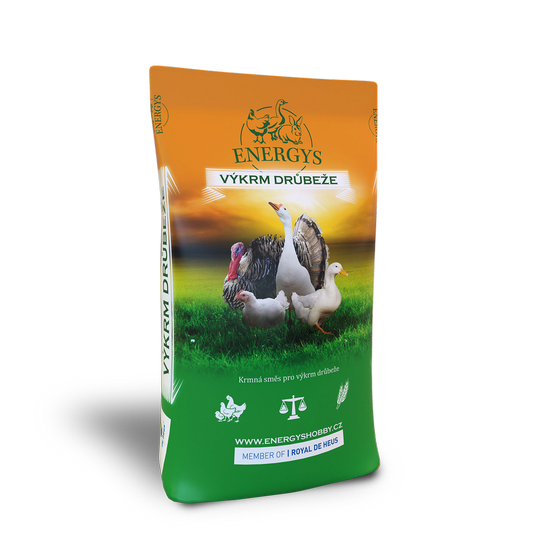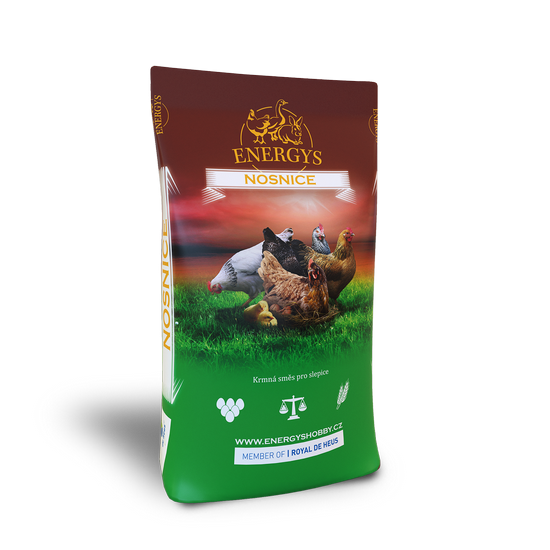Rabbits
Poultry
Laying hens
Quails
Guinea pigs
Pigs
Ostriches
Sheep and goats
Pigeons
Pheasants
Forest animals
Do your chickens have mites or lice?
Believe it or not, every hen keeper will at least once go through that state of despair when they discover a louse or mite on their hen. If this unfortunate event has happened to you, you need not despair. How do you deal with unwelcome guests or, better still, how do you not let them into your hen house?
Parasites in hens
 Unfortunately, chickens are an unprotesting host for parasites, and so the mites are happy to make their home on them. But neither you nor your hens share the joy of the little vermin. They are at risk of a drop in laying, irritation and, in the worst case, death.
Unfortunately, chickens are an unprotesting host for parasites, and so the mites are happy to make their home on them. But neither you nor your hens share the joy of the little vermin. They are at risk of a drop in laying, irritation and, in the worst case, death.
Most often you will see mites and lice in your hens. The difference between the two is that while mites feast on hen’s blood and thus cause anaemia, lice feed on hen feathers and dust. But both pests can wreak havoc.
Do not neglect prevention
Prevention is the best thing you can do for your hens, so don’t underestimate it. Early detection is of course ideal, so you should check your flock regularly, at least once a week. Don’t forget about their perches, nests and gaps in the coop.
You can also give your hens a dust bath. Sprinkle diatomaceous earth in all corners of the coop – it will help prevent pests and parasites.
The biggest vectors are wild birds. It is therefore important to restrict their access to the hen feeders to keep them at a safe distance.
Also change old litter regularly with new litter, ideally once a week. If the weather is not favourable, you can’t go wrong with a second weekly change. You can use hay, straw or shavings.
How can you tell if your hen has mites or lice?
If something hurts you, everyone is guaranteed to see it in you. It’s the same with chickens, who are often very uncomfortable with parasites. In hens, you will notice a lack of appetite for food and water, weight loss, apathy or reduced egg production. The hen’s feathers take the brunt of it – they look dull and are lost a lot when infested, especially on the back, where the mites like it best. You probably won’t see mites at close range, but you might see fleas or lice.
Here comes the treatment
If you find an infested hen in your flock, put her away from the others. Disinfection is important – so clean the whole henhouse, laying nests and feeders. Leave infested hens in the poultry house as long as possible, and dust under their wings. You can also help by applying natural oil to smother the parasites.
Remember also that each new hen should remain in quarantine for a fortnight. This is because you need to make sure that the new member of your flock does not introduce any parasites among its fellows.
Related posts
8. April 2025
Breeders raising hens for egg production naturally want them to produce as many eggs as possible while keeping costs low. For this purpose, commercial breeders exclusively use specially-bred hybrid layer hens created by crossing different genetic lines of pure breeds. These hybrid breeds carry in their genetic information the desired traits such as a high…
19. June 2024
The domestic chicken, or hen, is one of the most important farm animals and provides benefits in the form of eggs and meat. Today, more and more emphasis is being placed on animal welfare. As a result, farmers are already starting to prepare for mandatory changes to the housing of laying hens. The following article…
19. February 2024
The popularity of raising chickens in household conditions has been rising in recent years. This trend may be due to several factors, one of these surely being the search of high-quality foods, a more sustainable lifestyle and desire for greater independence. Breeding chickens at home also allows owners to control the animals’ living conditions and…
26. October 2022
Chickens are the most numerous bird species ever, with 26 billion breeding representatives. Unsurprisingly, they are divided into several groups according to different aspects. Which division is the most common, and which breeds of hens should you definitely be familiar with?
3. October 2022
When keeping chickens, one may wonder how long a hen actually lives. There is no clear answer to this question. It always depends on several factors – some you can influence, some unfortunately you cannot. How can you contribute to the long life of your hens and how does the life of a fowl work?
Related products

POULTRY UNI 30
A mashed concentrate for fattening of all categories of poultry, which includes the highest quality soja. It is mixed with cereals in a ratio of 20-40% (by type or phase of fattening). It contributes to fast growth and a high meat content. It does not contain coccidiostats.

LAYER REPRO
Granulated feed for laying hen breeds. Supports higher hatching rates and the successful development of the embryo. Higher content of chosen substances). The laying hen must have access to an adequate amount of potable water.

LAYER GOLD
Granulated feed for laying hens when laying. Supports high laying eggs with a solid shell and a beautiful yolk color. It follows the feeding of the Chicken MIDI mixture. Indicative feed consumption per 1 year ranges from 50-60 kg / piece.

LAYER KLASIK
A powered feeding mix intended for laying hens. With its rough shredded structure it contributes to maximum usability.

CHICKEN MIDI
From the 5th week to the end of the 20 week old chickens. It follows on from feeding with the Chicken MINI feed. Through its make up it helps in the correct development of the organism and with future high usability. It doesn’t contain coccidiostats. It is produced in two forms, granulated and powder.

CHICKEN MINI
A crumbled compound feed without anti-coccidiosides. Suitable for reared chickens of the laying hen type till the end of their 4 weeks of age. It contains a balanced ratio of nutrients supporting the correct development of chickens. For weaning chickens the following mix is CHICKEN MIDI.
